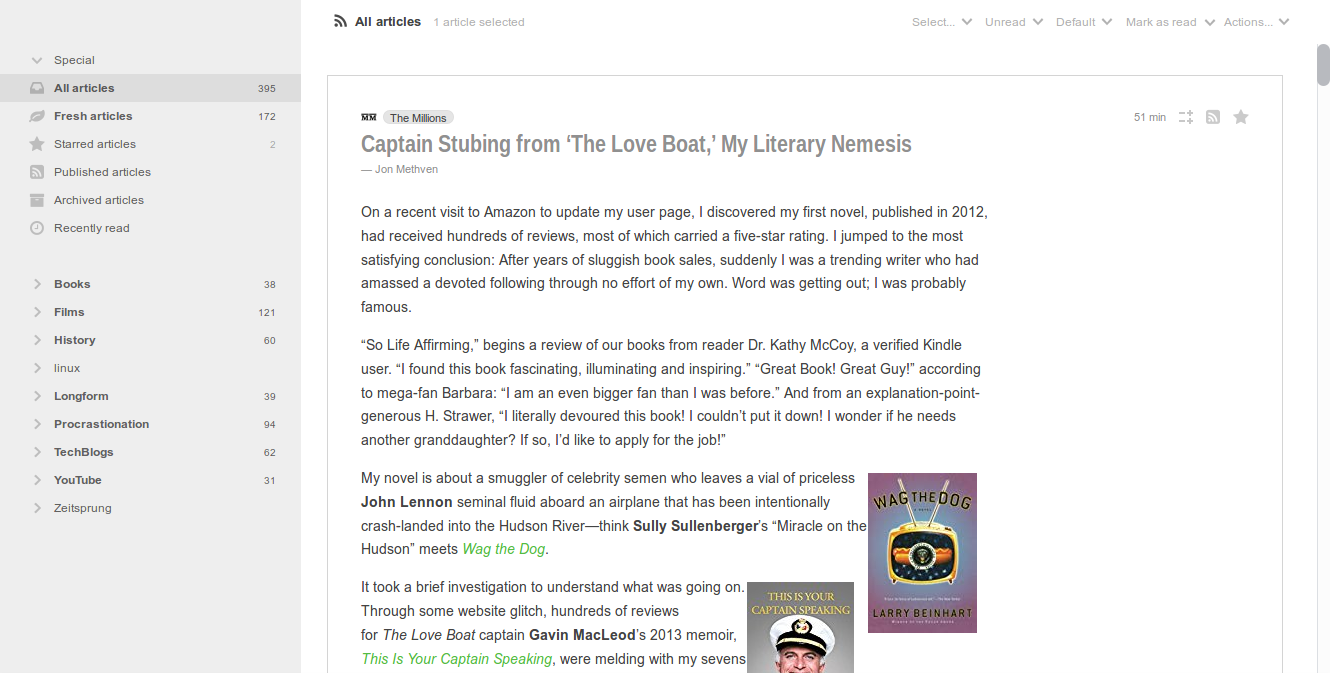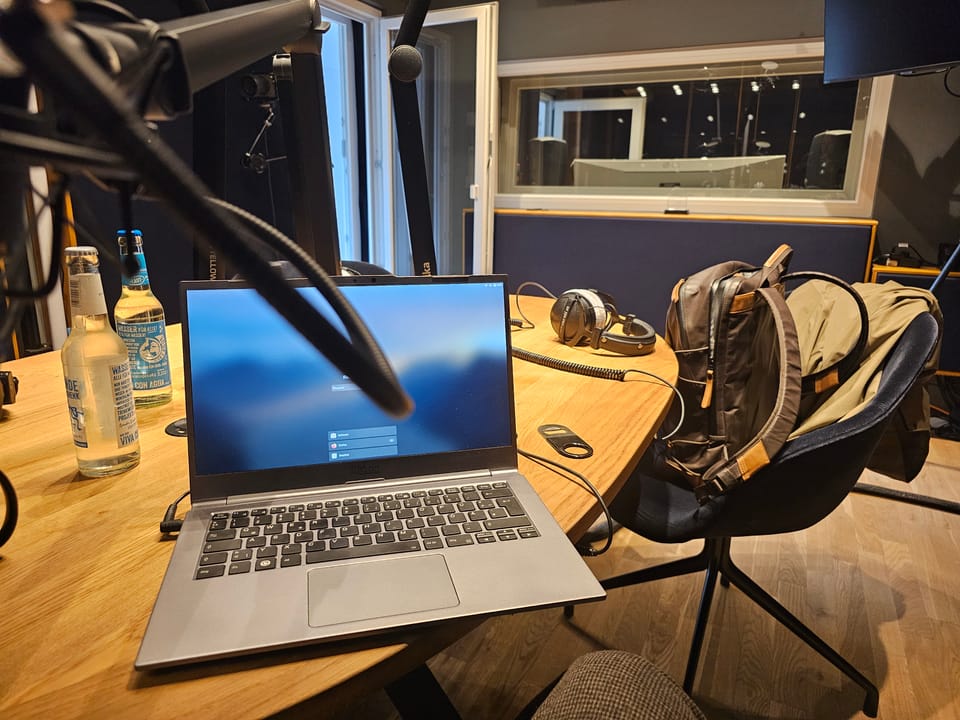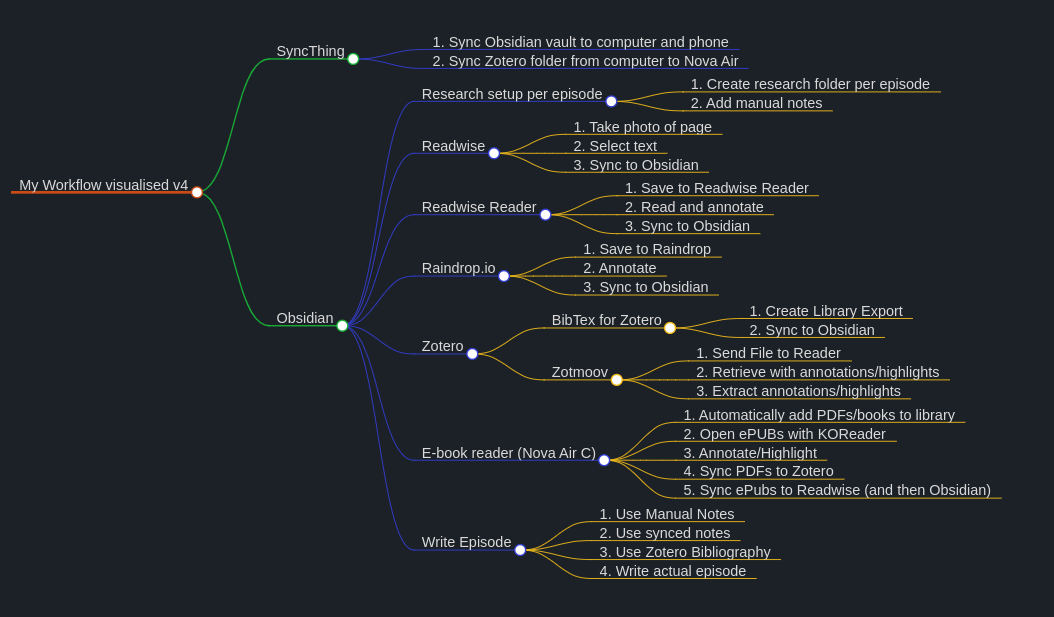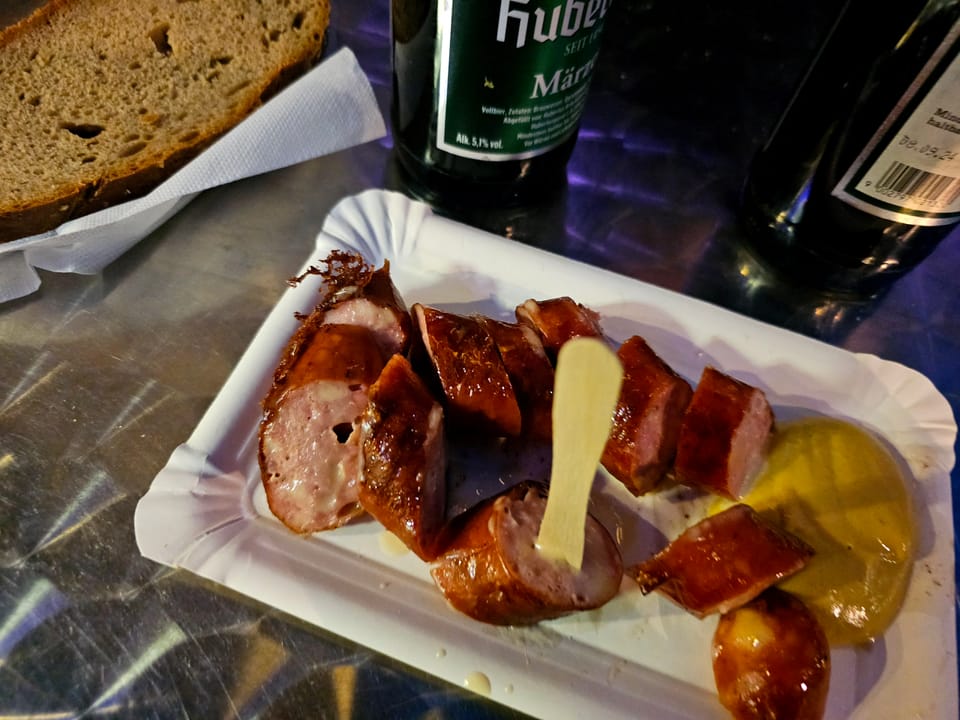I'm a man of simple pleasures. One of those pleasures is having a smoothly running feed-reader setup. What are the cornerstones of such a setup? Well, three things:
- A basic self-hosted reader I can use on the web
- An API for that reader so I can synchronize to a mobile app
- Some theming options that allow me to make it all not look like shit
- (optional) A piece of software for the desktop that allows me to read it all offline as well
Up until a few days ago I used FreshRSS, self-hosted via my Cloudron installation (read or hear more about Cloudron at Selfhosted Web, where I did a write-up and a podcast episode about it).
FreshRSS is a solid piece of software, but I've always had problems getting mobile apps to really work with. News+, a fairly nice and full-featured mobile feedreader worked well, until it didn't (it hasn't been updated in ages, which might be the cause). I then switched to the EasyRSS, which is in fact easy, but too bare-bones for my taste. In addition to these gripes, some thing or other with the actual URL to use to access the API was always the case, making it somewhat frustrating when I had to guess whether it was just the URL of my self-hosted instance or an additional "/p/api" or even /p/api/greader.php" the app was looking for.
So, I spun up an instance of Tiny Tiny RSS, also via Cloudron. It took me about two minutes to do that, and after importing the OPML of my FreshRSS installation, it was up and running. At which time I finally got a mobile feedreader I'd set my eyes on before to actually work: FeedMe, which is beautiful, simple-looking but still rather full-featured. The thing is, I never got it to work with FreshRSS, and even after digging through the logs of my FreshRSS instance, I never found out what the problem was.
So, finally, here I am, with a setup that seems to work rather well. Let's go through the cornerstones:
- and 3.: The web version, Tiny Tiny RSS, themed with a third-party Feedly-like theme, which you can get here.
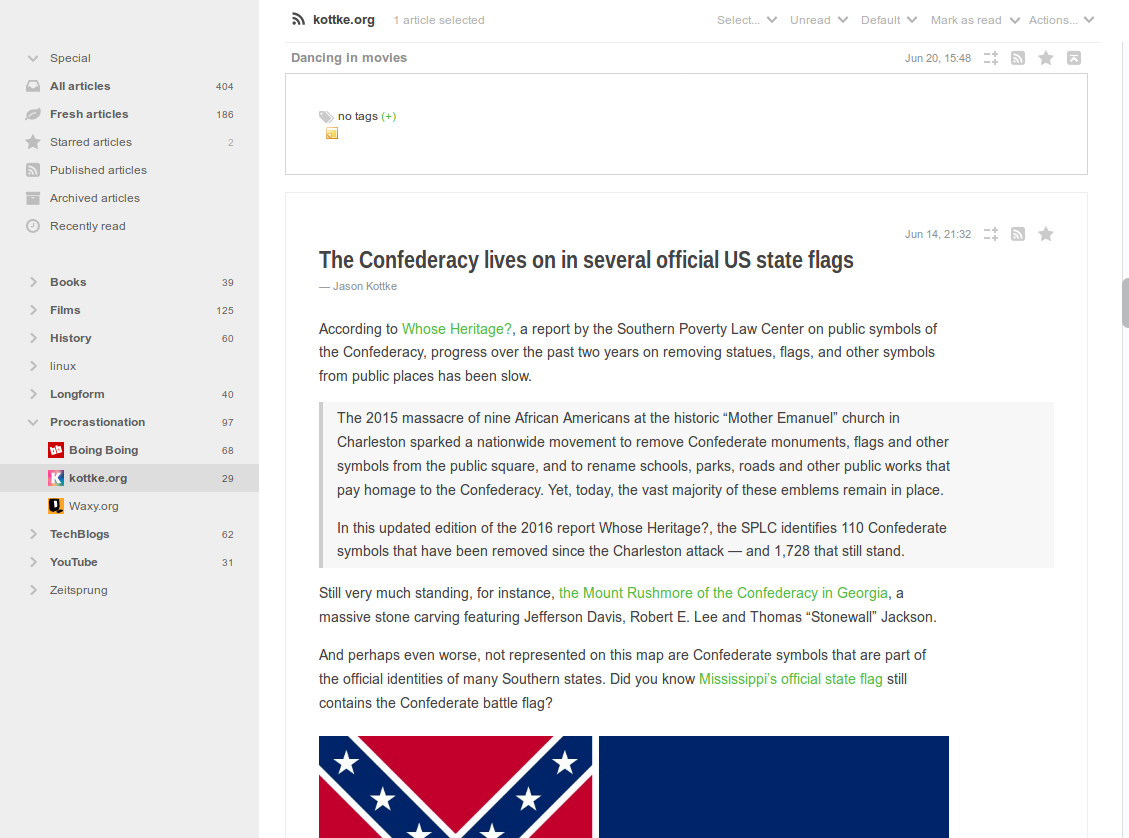
2. FeedMe, plugging into the TTRSS API, synchronizes everything to my phone and is quite the eye-pleaser as well. Bonus: it allows you to use various different fonts, so of course I opted for the Ubuntu font.
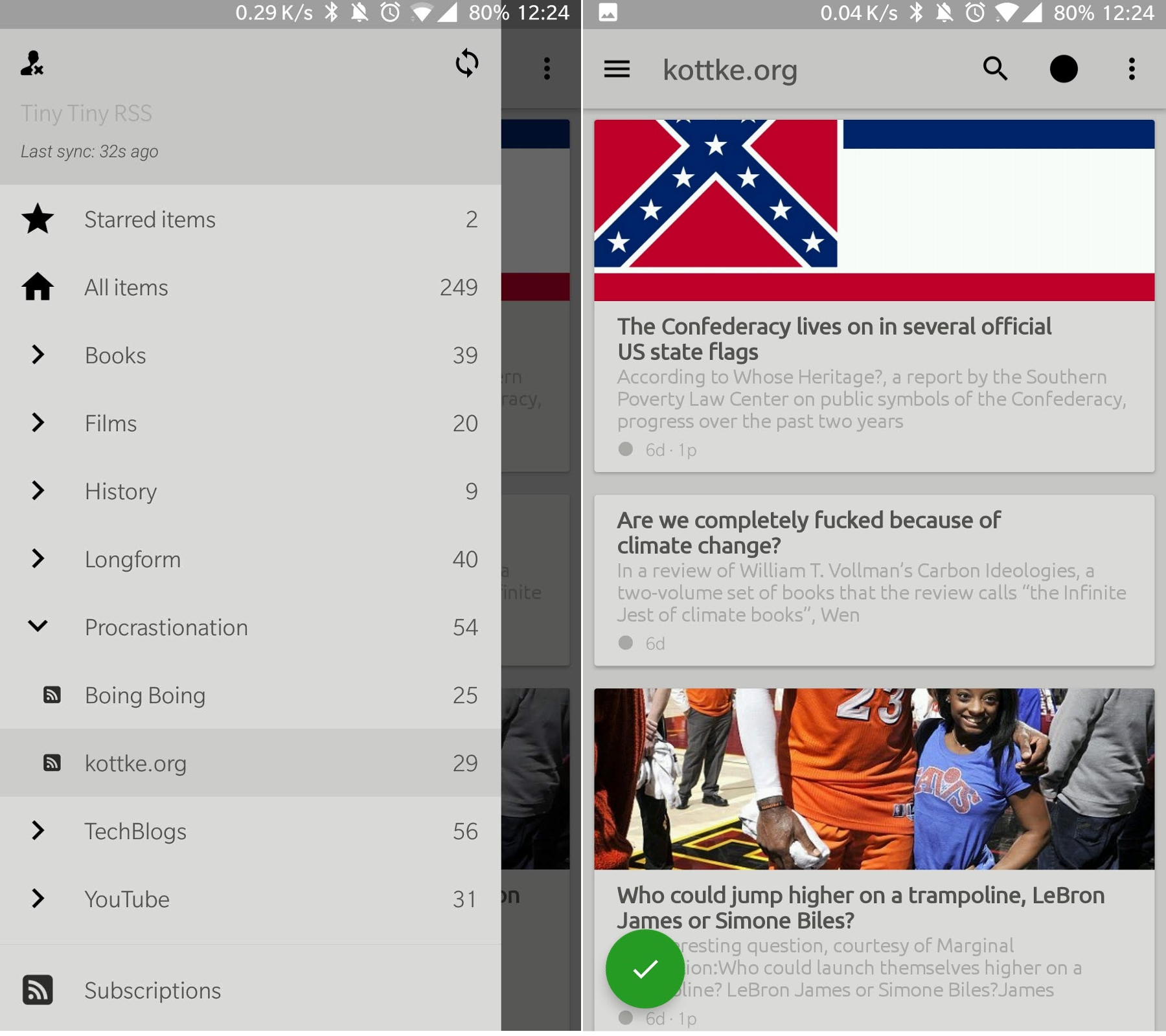
4. Finally, the optional desktop app. I'm using Linux and there's a few options for Linux feedreaders, but not so many that can plug into a self-hosted or even hosted feedreader to synchronize. But, there's the aptly named "Feedreader", which does just that and in addition looks rather nice as well.
But, as it happens so often, things aren't as straight-forward here. Feedreader needs an additional plugin for TTRSS installed, which enhances the standard API and allows it to actually connect to TTRSS. It's a system plug-in that needs to be activated via the config.php, but as TTRSS is running via Cloudron, writing to systemfiles isn't possible (to avoid future upgrade-problems). I tried setting the plugin to a non-system one, but then Feedreader doesn't recognize it. I will have to keep investigating to find a way to satisfy this point.
Well, and that's it. My new feedreader setup.
One last note, just to explain why I'd go through the hassle of setting something likes this up in the first place.
RSS (or ATOM) feeds are themselves cornerstones of the open web. Back when Twitter or Facebook were a mere glint in the milkman's eyes, people got all their news every morning from firing up their feedreaders and doing their first (but usually not last) feedrun of the day. The openness of RSS allowed many different apps to use these little gems and display them in a readable manner. With the advent of Twitter and Facebook, fewer and fewer people used their feedreaders, because suddenly they got all their news and interesting links directly through their own filter-bubble. But that filter-bubble is exactly that: a bubble which usually is rather impermeable, showing you the things you think you're interested in but not much more. Seeing how vast and diverse the web really is, that makes us disregard many different places and sources of news, entertainment or thought.
Going back to using feeds allows me to look beyond what my filter bubble shows me and it also paves the way for my exit from the big social media players, which, I am still hopeful, will happen someday.
